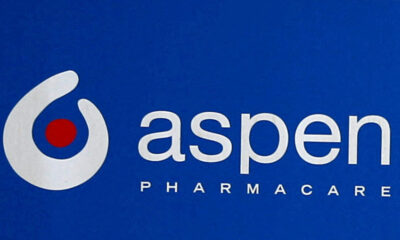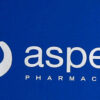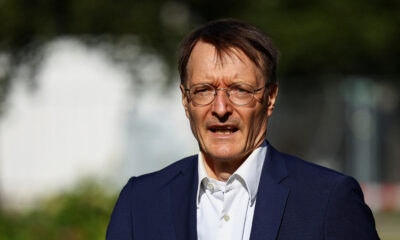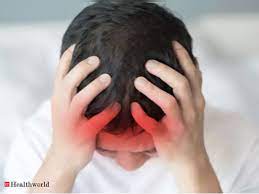Why Europe’s drug shortages may get worse
Why Europe’s drug shortages may get worse | Reuter
Most European countries reporting shortages of antibiotics
Low generic drug prices mean razor-thin margins for firms
Companies say they cannot boost output enough due to costs
Some say making generics in Europe becoming unsustainable
When Ignasi Biosca-Reig heard there were shortages of amoxicillin in Spain, he quickly added shifts at his drug company’s factories to boost production of the popular antibiotic. But a few extra shifts was as far as he could go.
Much as he would have liked to significantly increase supplies, Biosca-Reig said he couldn’t justify investing millions of euros in new production lines unless he was paid more for the generic drug to cover sharply rising costs.
But, like many European countries, Spain set the price manufacturers are paid for paediatric amoxicillin when the generic version of the drug was first launched in the country two decades ago, and it has barely budged since.
“It’s a non-business,” said Biosca-Reig, chief executive of Spanish drugmaker Reig Jofre (RJFE.MC).
“We wanted to react, but we had a problem,” he said. “The costs go up, the price remains the same.”
While many countries around the world have reported shortages of antibiotics as respiratory infections return with a vengeance after the lifting of pandemic restrictions, the problem in Europe is particularly acute.
With prices for generics regulated, many European drugmakers said they are reluctant to expand capacity at a time when the war in Ukraine has pushed up the cost of everything from energy for factories to cardboard for packaging to aluminium for bottle caps – suggesting more shortages are on the cards.
According to 13 European manufacturers and six generic drug industry associations and trade groups who spoke with Reuters, many firms are struggling to make enough money to justify making antibiotics at all – let alone increase production.
“We cannot keep this capped pricing when all of our production, logistics and regulatory compliance costs are increasing at double digits or more,” said Adrian van den Hoven, director general of lobby group Medicines for Europe, which represents makers of generic drugs in the region.
The companies Reuters spoke with declined to disclose margins for specific generics for competitive reasons.
THE COST OF CHEAP GENERICS
Before launching tenders, many European governments compare the price of a generic medicine to other markets in the region, or to similar drugs at home, to set a reference price which then serves as the benchmark in negotiations with suppliers.
They typically award contracts to manufacturers offering the lowest price, which then results in further downward pressure on prices in subsequent tenders, drugmakers say.
Generic medicines now account for about 70% of all dispensed medicines in Europe, but only 29% of the money spent on drugs by national health agencies, according to Medicines for Europe.
European generic drugmakers say the tender system and regulated prices have fuelled a race to the bottom, and European firms are being undercut by suppliers from Asia.
Over the past decade, this has forced some European companies to either cut output or move manufacturing of generics and active pharmaceutical ingredients (APIs) needed to make them to India and China, where costs are much lower.
Industry executives now say an overhaul of pricing schemes is the only way to reinvigorate manufacturing in Europe, both to avoid shortages in the future and to prevent the continent becoming even more dependent on Asia for essential medicines.
“There’s a growing awareness that we may have to pay more to ensure our supplies of these medicines is secure and not dependent on other regions, for our own health and national security,” said Rena Conti, a drug pricing expert and professor in the department of markets, public policy and law at Boston University’s Questrom School of Business.
BRUSSELS, WE HAVE A PROBLEM
The European Medicines Agency (EMA) and European Union lawmakers acknowledge there is a problem.
The EMA and the European Commission have met repeatedly with drugmakers and trade groups since the shortages were first reported in October, but no major action has yet been announced, all the parties involved said.
EMA chief medical officer Steffen Thirstrup told Reuters last month that it was fairly unusual to see so many countries reporting shortages of the same products, but forecast demand would ease as warmer weather approaches.
In the interim, alternative medicines could be used where amoxicillin is unavailable, Thirstrup said.
A number of patient groups warned last month, however, that substitutions were now squeezing supplies of other drugs.
The European Commission is scheduled to table revisions to the bloc’s pharmaceuticals law in March.
It is proposing measures including requiring manufacturers to hold larger reserve supplies and to give early warnings about shortages, but executives want Brussels to also back their calls for governments to change tender and pricing systems.
“The key long-term issue is not the production cost, it’s the overall European market framework, which doesn’t allow us as a producer to adjust prices flexibly to reflect change in input costs, especially on essential medicines,” said Giovanni Barbella, global supply chain head at Sandoz, the generic division of Swiss pharmaceutical giant Novartis (NOVN.S).
In Spain, the price of paediatric amoxicillin was set at 98 cents ($1.05) for 60 ml in 2003. In 2013, that became the price for 40 ml but it hasn’t changed since. Half the generic medicines sold in Spain are priced below 1.60 euros per box or bottle, the country’s generics manufacturing association said.
Prices of antibiotic generics in Britain are on a par with Spain, according to drug pricing expert Melissa Barber, while in Germany, the biggest generics market in Europe, the average amount manufacturers receive has fallen 66% over the past decade, Germany’s generic drug association Pro Generika said.
Elisabeth Stampa, a member of Spanish pharmaceutical company Medichem’s advisory board, said in most European countries there was no mechanism to review prices, link them to inflation, or justify an increase because APIs have become scarce.
“It’s extremely difficult to keep the same products you launch competitive after 10 years,” said Stampa, who was previously Medichem chief executive.
NO SPARE CAPACITY
Some countries are promising to take action.
Germany’s parliament is due this year to consider legal changes to its tender system for generic drugs while Spain’s Health Ministry told Reuters last month the government was considering changes to its pricing system that could result in temporarily paying higher prices for drugs such as amoxicillin.
Executives and trade groups also said that they were often unaware when there was a risk of shortages because there was no central EU system that tracks supplies of essential generic drugs in each country, as is the case for patented medicines.
“You get what you pay for. With price being the decisive criterion in tenders, you are sending a message that security of supply, quality and environmental standards are less important,” said Thomas Cueni, director general of the International Federation of Pharmaceutical Manufacturers & Associations.
Years of price pressures on manufacturers has forced many smaller firms to get out of the business and only a few generics makers service much of Europe for drugs such as amoxicillin.
Five companies – Britain’s GSK (GSK.L), Sandoz, American drug company Viatris (VTRS.O), India’s Aurobindo (ARBN.NS), and France’s Servier – have nearly 60% of the amoxicillin market in Europe, according to market researcher IQVIA.
In Germany, for instance, Sandoz has a 70% market share for amoxicillin drugs, says Pro Generika.
When the shortfalls became apparent, some companies ramped up production, but not by enough to meet immediate demand.
“There has been a decline in European capacity and right now in this situation, there is not the spare capacity to really respond to these shortages,” said Rex Clements, chief executive of Dutch API maker Centrient Pharmaceuticals.
Sandoz told Reuters that by adding extra shifts at its Austrian factory, it aims to increase production of amoxicillin by a double-digit percentage this year compared with 2022, and an expanded facility will also come on stream in 2024.
GSK also hired new staff and added shifts at its amoxicillin plants in Britain and France, a spokesperson said.
But companies with smaller market shares, such as Israel’s Teva (TEVA.TA), which has 5% of the region’s amoxicillin market according to Medicines for Europe, are constrained.
“There is no way we can increase our capacity in order to fill the market gap,” said Erick Tyssier, Teva’s head of government affairs in Europe. “It’s just not possible.”
($1 = 0.9348 euros)
Visit Website: www.healthbroadcastingservice.com












